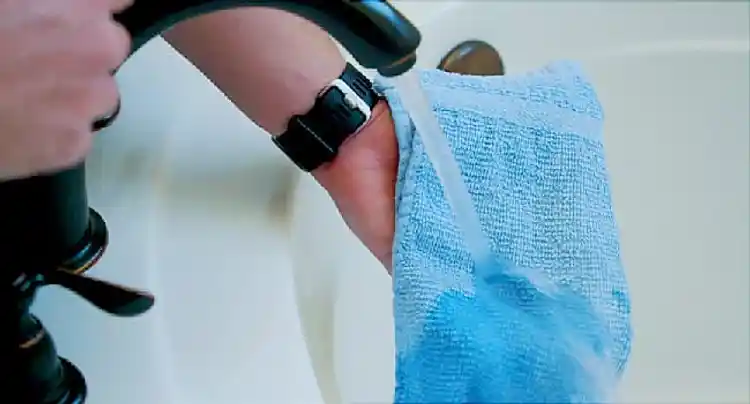Tips to Care for Hidradenitis Suppurativa Wounds

Hide Video Transcript
Video Transcript
[MUSIC PLAYING]
Put a warm compress on it, and put it on the lesion for about 10 minutes. The heat draws out the pus, if there's any in it, and it helps with the inflammation. It soothes it. Take a dilute bleach bath, where you fill your tub, put a half a cup of bleach in there, and just soak for about 10 minutes. It kills the bacterial count on your skin.
Keep your wounds clean with a gentle antibacterial soap. Nothing fragranced, and don't scrub it with a cloth. Just use your hands and be real gentle. But you need a nonstick bandage that's absorbent. Now, this is hard-- because these are skin fold areas-- to keep those bandages in place. So you might want to paper tape them in place. So change your bandages according to your wound drainage. If you can get by with twice a day because your wound's not draining very much, that would be ideal. If you need to change it during the day so you don't soak through your bandages, by all means, do so.
STEPHANIE GARDNER
Hidradenitis suppurativa is a chronic inflammatory skin condition. Its recurrent, and it can be debilitating. Generally, we find it in skin fold areas, like armpits, groin area, perianal area, upper inner thighs, and underneath the breasts in women. To treat HS, if there's a mild case, you can do some things at home. Don't pick it, for one. Don't try to drain the pus out yourself. Put a warm compress on it, and put it on the lesion for about 10 minutes. The heat draws out the pus, if there's any in it, and it helps with the inflammation. It soothes it. Take a dilute bleach bath, where you fill your tub, put a half a cup of bleach in there, and just soak for about 10 minutes. It kills the bacterial count on your skin.
Keep your wounds clean with a gentle antibacterial soap. Nothing fragranced, and don't scrub it with a cloth. Just use your hands and be real gentle. But you need a nonstick bandage that's absorbent. Now, this is hard-- because these are skin fold areas-- to keep those bandages in place. So you might want to paper tape them in place. So change your bandages according to your wound drainage. If you can get by with twice a day because your wound's not draining very much, that would be ideal. If you need to change it during the day so you don't soak through your bandages, by all means, do so.
